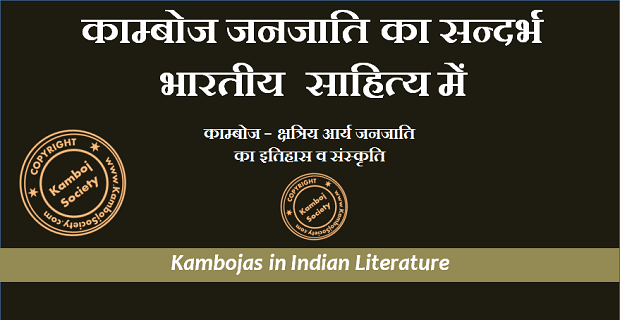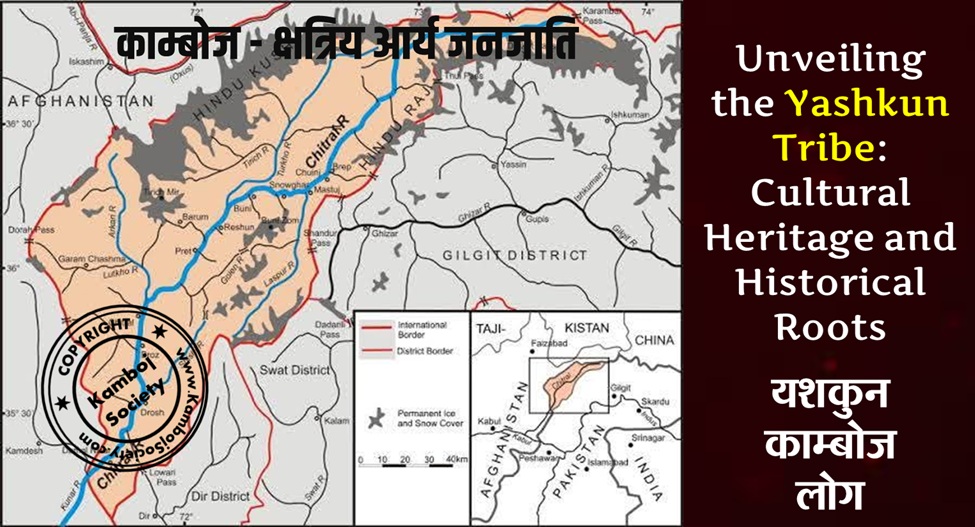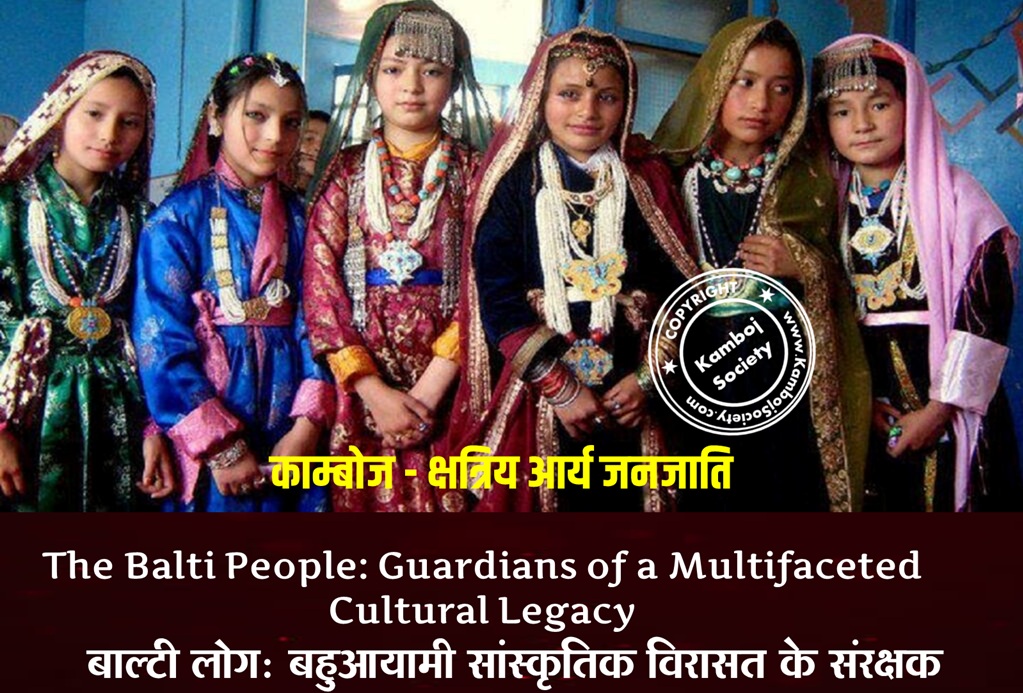The Kambojas peoples are referenced in numerous Sanskrit and Pali|Pali literature including Sama Veda, Atharvaveda, Ramayana, Mahabharata, Puranas, Kautiliya's Arthashastra, Yasaka's Nirukata, Buddhist Jatakas, Jaina Canons, ancient grammar books and plays etc.
A few illustrative examples are presented as follows:
Kambojas of Panini's Ashtadhyai
Panini (Ashtadhyayi 4.1.168-175) notes Kamboja as one of the fifteen prominent Kshatriya Janapadas in north-west. He also gives a rule for the derivative to denote the king of Kambojas. He attests that the word Kamboja denotes not only the Kamboja Kshatriya clan or the Kamboja country but also the ruler of the Kambojas as well as a descendant of the Kamboja Kshatriyas.
The Mayuravyamsakadi--Ganapatha on Panini's rule II.1.72 attests that the Kambojas and the Yavanas observed a social custom of supporting short head-hair (Kamboja.mundah Yavana.mundah...i.e shaved-headed like Kambojas, shaved-headed like Yavanas).
This same characteristics of the Kambojas are attested by Mahabharata (mundanetan ....Kambojan.eva... MBH 7/119/23) as well as numerous Puranic literature (Yavananam shirah sarvam Kambojanam tathaiva cha: Harivamsa 14/16)
Main Article: Kambojas of PaniniKambojas of Yasaka's Nirukuta
In Nirukuta(II/2), besides commenting on the Kamboja language, Yasaka also attempts to etymology|etymologize the term Kamboja, defining it as kambal.bhoja and Kamaniya.bhoja:
The Kambojas enjoy kambala (blankets) i.e they are Kambal.bhojas. Also the Kambojas enjoy beautiful (kamaniya) things i.e they are 'kamaniya.bhojah'. Hence they are called Kamboja. (Nirukuta 2/2).
Numerous ancient commentators like Durga Acharya, Brahmuni Privrajika, Sikanda Swami etc have commented on Yasaka's Nirukuta including Yasakian terms Kamaniya.bhoja and Kambal.bhoja in reference to the Kambojas. From their commentaries, we get very useful information not only on the climate & geographical location of Kamboja country but also on the food habits, dress-mode and industry/craft of ancient Kambojas. These commentaries provide powerful evidence on Kambojas' riches and the luxurious lives they lived.
Main Article: Kambojas of Yaska
Mahabharata Traditions
Shantiparva of Mahabharata refers to a Kamboja warrior/king who had wrested the prized sword from Dhundhumara aka Kuvalashava, the celebrated king of Ayodhya (MBH 12/166/77). It was probably from this Epic Kamboja|Kamboja that his country/tribe came to be called Kamboja (Puranic Encyclopaedia, Vettam Mani).
Adiparva refers to a powerful king of Kambojas called Chandravarma and describes him as an incarnation of Asura Chandra, foremost among the sons of Diti and handsome as the lord of the stars himself (MBH 1/67/31-32) .
Sabhaparva refers to another king of Kambojas called Kamatha Kamboja who has been counted among principal Kshatriyas invited by king Yudhishtra on the inauguration ceremony of the imperial palace at Indraprastha (MBH 2/4/22)
Sabhaparva informs us that a king of the Kambojas had taken part in the Rajasuya sacrifice of king Yudhishtra (MBH 2/532/3).
Sudakshina, the illustrious monarch of Kambojas had participated in the Swayamvara of princess Draupadi of Panchala,, country (MBH 1/185/13).
Epic War and the Kambojas
Main Article: Kurukshetra War and the Kambojas
Among the Kshatriya tribes in the Mahabharata, the Kambojas occupy a very prominent place. They were allies of Duryodhana and by their bravery, and especially the prowess of their king Sudakshina, they had rendered great service to The Kurus|Kuru side in the long drawn battle at Kurukshetra (Dr Law).
Sudakshina had joined Mahabharata war leading a grand army of wrathful warriors of Kambojas, Sakas and the Yavanas. The mass of his one Akshauhini (division) army is stated to look like a swarm of locusts (MBH 5/19/21-22).
Sudakshina was one of the few Maharathas or great heroes on the field (Dr Law). Mahbharata numerously refers to Sudakshina as a great Maharathi (Sudakshinan tu rajendra Kambojanam maharatham), lionlike (Purushavyaghrah), a volcano giving out flames (Kamboja.vadava.mukham), a lion among the chariot-warriors (ratha.simhasya) and a Mahabali/Mahabahu undefeatable even by the gods in the battle (MBH 7/158/64-66) etc.
Image:Kurukshetrawar.jpg|thumb|350px|right|Fought for 18 days, the Battle of Kurukshetra was one of the great battles fought in ancient India. Shown here are the two warring armies pitched against each other on first day of the war.
Sudakshina had fought very ferociously until slain by Arjuna on 15th day of the war. He roared like a lion (sinha.nadamathanadat) as he fought and had given Arjuna indeed a tough fight. In the final and deadly duel brave Sudakshina had seriously wounded Arjuna and sent him into a terrible swoon, but finally was overcome and fell a magnificent martyr to Kuru cause (MBH 7/92/61-76).
Younger brother of Sudakshina, known as Prapaksha Kamboja|Kamboj had also participated in the Bharata war and had fought ferocious duels on Kurus' side. This tall and extremely handsome prince was also finally slain while fighting valiantly with Arjuna on 17th day of the war (MBH 8/56/111-114).
The Mahabharata repeatedly applauds the mighty and immense army of the Kambojas, calling it a flooded river, invincible in the battle. There are numerous references to countless Maharathas or great heroes of the Kambojas (MBH 7/113/61). The Kamboja warriors have been described as 'strikers of fierce force' (tigmavega.praharinam).
In hot war-field, the Kambojas have been described as elephants gone berserk (durvarana nama Kamboja); war-intoxicated warriors, biting the lips in rage as they fought (damshitah krurakarmanah Kamboja yuddhadurmadah); Death-personified (samana.mrityavo); deadly like cobras (tikshnai.rashivishopamah), and terrible like Yama (Hinduism)|Yama the god of death and rich like Kouber the god of wealth (Yama vaishravan.opamah) etc.
Dronaparva of Mahabharata terms the entire Kamboj soldiery as fiercely brave, scholars of Vedas (kritavidyashcha), firmly devoted to the science of weapons, highly united, self-sacrificing and well-wishers of each other (7/112/43-44).
Puranic Literature
Puranic literature groups the Kambojas with the Yavanas, Sakas, Pahlavas and Paradas and refers to a social custom prevalent among them which was against that of the Hindus.
The Hindus by religion were ordained to support a sikha or knot on head and therefore, looked askance towards those who had their hair cropped short (mundah).
Puranas say that with the help of ayudhajivi sanghas of above-said tribes known as five hordes (pañca.gana), the Haihaya and Talajangha Indo-Aryans had dethroned Vedic civilization|Vedic King Bahu of Ayodhya. However, a generation later, Bahu's son Sagara had recaptured Ayodhya after completely destroying Haihayas and Talajanghas. Sagara was about to crush the five hordes when Sagara's priest Vasishtha intervened. Vasistha advised Sagara to let the hordes go after meting them out a lighter punishment. Listening to his Spiritual Guide, Sagara forbade these invaders to perform Svadhyayas and Vasatkaras (Vedic religion|Vedic rituals), thus divesting them of their Kshatriyahood. Sagara also forced the Kambojas and Yavanas to shave whole of their heads, Sakas to shave half, Pahlavas to grow beards and the Paradas to wear their hair free (Harivamsa 14.1-19)
The story apparently has been tuned to explain certain peculiarities of these foreigners by suggesting that their peculiar hair styles were due to their defeat at the hands of Sagara.
Prevalence of short hair style among the Kambojas is also attested from Mahabharata (7/119/23) as well as from Ganapatha on Panini's rule II.1.72 (Kamboja-mundah, Yavana-mundah).
Kautiliya's Arthashastra
Kautiliya's Arthashastra attests that the Kambojas followed Republic|republican constitution.
Kautiliya contrasts Varta.shastr.opajivin (martial republican) Sanghas with the Raja.shabad.opajivin (king-council) Sanghas and includes the Kamboja and Saurashtra|Surastra Kshatriyas in the 'Varta-shastr.opajivin' or 'martial republics' category.
i.e Corporations of warriors (Kshatriya shrenis) of the Kamboja and Surashtra and some other nations live by agriculture, trade and by wielding weapons (Dr R Shamasastry).
Kautiliya also attests that the Shrenis or corporations of the 'Shastr-opajivins' (i.e the Kambojas and Surastras etc) were the most heroic and best source for military recruitment (Arthashastra 7/14/26-28).
The martial republics mentioned in Kautiliya Arthashastra are headed by Kambojas (Dr Jayswal).
The democratic constitution of the Kambojas is also testified by Mahabharata which refers to several brave Ganas or Kamboja Republics|Republics of the Kambojas (Kambojana cha ye Ganah....sangrame shura sammatah) fighting on Kurus' side.
Thirteenth Rock Edict of king Ashoka also affirms that the Kambojas, Yavanas etc were republican or kingless nations (araja.visyavasi yonakambojesu..) within the Mauryan empire.
Buddhist Literature
The Anguttara Nikaya refers to Kamboja as one of the sixteen great nations of ancient times (Anguttara Nikaya, I. p 213; IV. pp 252, 256, 261).
The same fact is also conveyed by one of the oldest Pali|Pali commentary, the Chullaniddesa.
The Majjhima Nikaya attests that in the lands of Yavanas, Kambojas and some other frontier nations, there were only two classes of people...Aryas and Dasas...the masters and slaves. The Arya could become Dasa and vice versa:
The Commentary [Majjhima Commentary, II, p.784] informs that a Brahmin would go to Kamboja or Yavana with his wife for purpose of trade and would die there, his wife would then be compelled to work for her living and her children might consort with slaves, in which case their children would be slaves.
This attests that in the lands of Kambojas and Yavanas (yonakambojesu), there was no place for Brahmanas.
Ashoka's Rock Edict XIII also attests Yona and Kamboja as a pair (Yonakambojesu), and conveys similar information on Yonas (directly) and the Kambojas (indirectly) stating that Brahmanas and Shramanas are found every where in his empire except in the lands of Yonas etc:
The Vishnu Purana also affirms the absence of chatur-varna system among the Kiratas in the east and the Yavanas, Kambojas etc in the pashchima or west (Vishnu Purana, 2/37).
Kamboja.sutta of Anguttara Nikaya forewarns that, in spite of their desire, the women of other country must not visit Kamboja (Anguttara Nikaya, II. p82).
The Commentary (Manorathapurani, Anguttara Commentary, II, p 523) also supports this fact.
This implies that there was, perhaps a shortage of women in Kamboja, and it was probably unsafe for women from other countries to visit Kamboja.
Bhuridatta Jataka refers to the Kambojas as following the non-Aryan (i.e Zoroastrian) customs like killing poisonous insects, moths, snakes and worms--which is recognized as Zoroastrian from passages in Mazdean books like the Vedevat (XIV.5-6) and from the remarks of Herodotus (I.140).
Kambojas in Manusmriti
Manusmriti (X/43-44) informs us that, in consequence of the omission of sacred Brahmanical rituals/codes and of their not heeding to the Brahmanans, the following noble Kshatriyas have gradually sunk in this world to the state of vrishalatam i.e become degenrate Kshatriyas: the Paundrakas, Chodas, Dravidas, Kambojas, Yavanas, Saka|Shakas, Paradas, Pahlavas, Chinas, Kiratas and Daradas.
A similar information on Kamboja, Saka, Yavana and other tribes is also contained in the Anusasanaparva of Mahabharata (MBH verse 13/33/21) which also states that due to neglect of Brahmanas, these noble Kshatriya clans have sunken to vrishalatvam i.e become degraded Kshariyas or Vratyas.
Based on this information of Manusmriti and Mahabharata, the scholars have listed the Kambojas, Sakas, Yavanas, Pahlavas, Kiratas, Chinas and other ancient Kshatriya clans as Vratya Kshatriyas or degraded Kshatriyas etc (Origin and Growth of Caste in India, Vol I, 1968, p 121-122, Dr N. K. Dutt).
Main Article: Kambojas and Manusmriti
Valmiki Ramayana
In Adi-Kanda of the Ramayana (1/55/2-3), one reads that the Kambojas, Yavanas, Sakas and some other allied tribes of north-west were 'created' at the request of sage Vasistha by the Divine cow Shavala to defend sage Vasistha from the forces of king Vishwamitra (Dr B. C. Law).
This poetical 'creation' of the Kambojas etc may point to some remote attempt on the part of some Brahmana rishi of Vasistha line to proselytize Iranian Kambojas and other allied clans of the north-west into brahmanised Kshatriyas of the Indo-Aryans|Indo-Aryan version.
These Hinduised Kambojas later became ardent champions of Vedic religion and the great scholars of the Vedas. Kamboja Aupamanyava was a distinguished scholar/grammarian and finds a place in the line of great ancient Vedic teachers of Vamsa Brahmana (1/18-19) of Sama Veda. Being a Kamboja and son of Upamanyu, this Kamboja sage was referred to as Kamboja Aupamanyava.
Dr Ludwig, Zimmer, Pusalkar, Law etc identify sage Upamanyu of Rig Veda (1.102.09) with the father of Kamboja Aupamanyava.
The Hinduised Kambojas are found listed at par with the Vasisthas in Paraskar Grihyam Sutram according to which the Kambojas and Vasisthas had common custom to wear one choti on right side of the head.This shows that the social and religious customs of the Brahmanised Kambojas and the Indo-Aryans|Indo-Aryan Vasisthas were identical but differed from other scholarly clans of ancient India.
The Bahu/Sagara Puranic legend also testifies very intimate relationship of the Kambojas with the Vasistha clan.
There are several references in Sanskrit and Pali|Pali literature which inform us of the scholarship of Kambojas.
The Mahabharta (7/112/43-44) reveals that, besides being fierce warriors, the Kamboja soldiers were also noted as learned people (kritavidyashcha).
The Vasistha clan appears to have played a leading role in proselytising the Persian_people|Persian Kambojas, especially the cis-Hindukush Kambojas living in Kabol/Swat and Rajori region, into Hinduism.
There are further indications that Kaundinya line of Brahminas, an offshoot from Vasisthas, also had good relations with the Kambojas, especially those Kambojas who had settled in western and southern India after Christian era.










